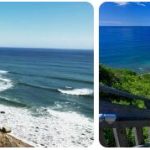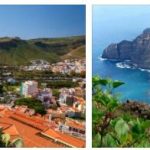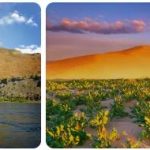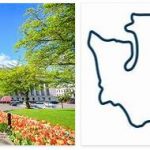Geography of Washington County, Rhode Island
Washington County, located in the southernmost part of Rhode Island, is a region of diverse geography, rich history, and natural beauty. From its picturesque coastline and sandy beaches to its rolling hills and tranquil forests, Washington County offers residents and visitors a wealth of outdoor recreational opportunities and scenic vistas. Check Directoryaah.com to learn more.
Topography and Landforms:
Washington County’s geography is characterized by its varied terrain, which includes coastal plains, low hills, and forested uplands. The county is situated within the New England Upland region, with the Atlantic Ocean bordering its southern and eastern shores.
The landscape in Washington County varies from the flat coastal plains along the shoreline to the gently rolling hills and valleys further inland. Elevations range from sea level along the coast to over 400 feet above sea level in the upland areas of the county.
In addition to its natural features, Washington County is also home to several historic sites and landmarks, including the village of Wickford, which is known for its well-preserved colonial architecture, and the town of Narragansett, a popular seaside resort destination.
Climate:
Washington County experiences a humid subtropical climate, characterized by four distinct seasons with varying temperatures and precipitation levels. The region’s climate is influenced by its coastal location and its proximity to the Atlantic Ocean.
Summers in Washington County are typically warm and humid, with average high temperatures ranging from the upper 70s to the low 80s Fahrenheit (about 25-28 degrees Celsius). Heatwaves are common during the summer months, with temperatures occasionally reaching into the 90s Fahrenheit (about 32-35 degrees Celsius).
Winters in Washington County are cool and damp, with average low temperatures dropping into the 20s and 30s Fahrenheit (about -6 to 1 degree Celsius). Snowfall is infrequent but can occur during winter storms, particularly in the inland areas of the county.
Spring and fall are transitional seasons in Washington County, marked by fluctuating temperatures and changing weather patterns. Spring brings blooming flowers and the return of migratory birds, while fall is characterized by colorful foliage and harvest festivals.
Rivers and Lakes:
Washington County is intersected by several important rivers and waterways, which play a vital role in shaping the landscape and providing water resources for agriculture, industry, and recreation. The primary river in the county is the Pawcatuck River, which forms part of the border between Rhode Island and Connecticut.
In addition to the Pawcatuck River, Washington County is also home to several smaller rivers and streams, including the Wood River, the Saugatucket River, and the Narrow River. These waterways provide habitat for fish and wildlife and offer opportunities for fishing, canoeing, and kayaking.
While natural lakes are relatively scarce in Washington County, the region is home to several saltwater estuaries and ponds that provide habitat for a variety of marine species. These estuaries, including Point Judith Pond and Ninigret Pond, are popular destinations for boating, fishing, and birdwatching.
Ecology and Biodiversity:
Washington County’s diverse geography supports a variety of plant and animal life, with its forests, wetlands, and coastal habitats providing habitat for a wide range of species. The region’s forests are home to hardwood trees such as oak, maple, and hickory, as well as pine and cedar forests along the coastline.
The wetlands and estuaries along the coast provide critical habitat for migratory birds, waterfowl, and other aquatic species. The coastline also supports a variety of marine life, including shellfish, crustaceans, and finfish, which are important for commercial and recreational fishing.
Efforts to conserve and protect Washington County’s natural heritage are ongoing, with organizations such as the Rhode Island Department of Environmental Management, The Nature Conservancy, and local conservation groups working to preserve critical habitats, restore wetlands, and promote sustainable land management practices.
Conclusion:
Washington County, Rhode Island, is a region of diverse geography, rich history, and natural beauty. Its humid subtropical climate, picturesque coastline, and rolling hills make it a haven for outdoor enthusiasts, history buffs, and those seeking a peaceful escape by the sea.
Whether exploring the sandy beaches and salt marshes along the coast, hiking in the wooded uplands, or visiting the charming villages and historic sites scattered throughout the county, visitors to Washington County are sure to be captivated by its coastal charm and natural splendor.








